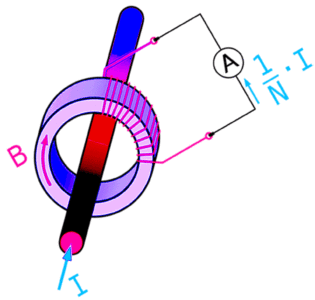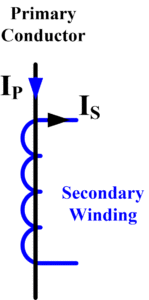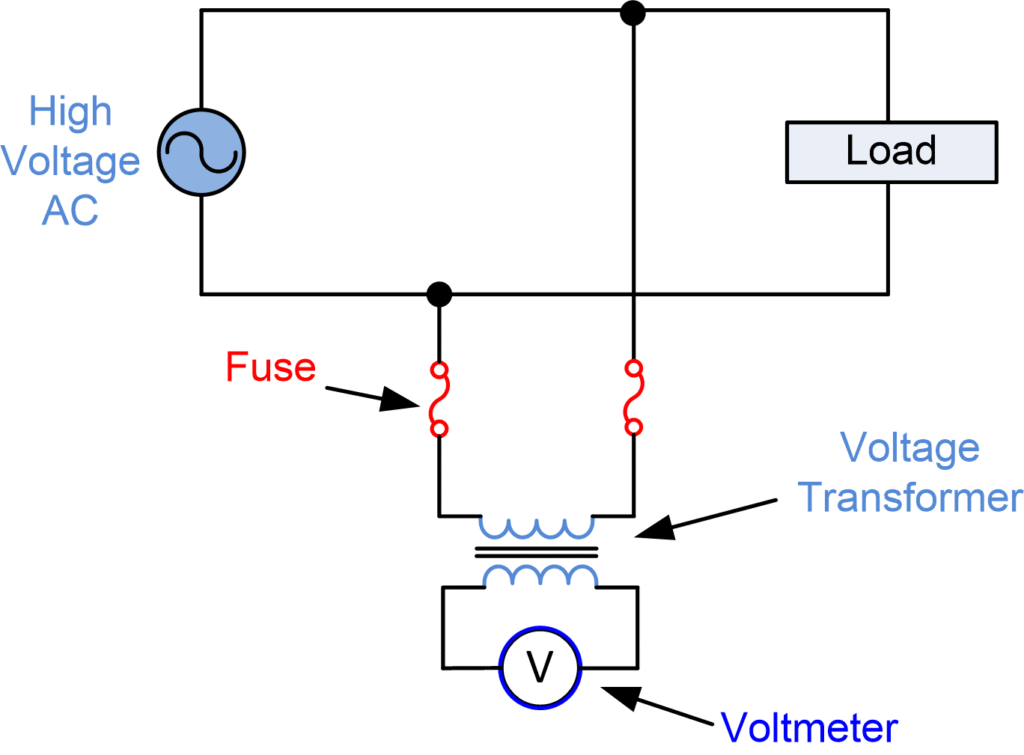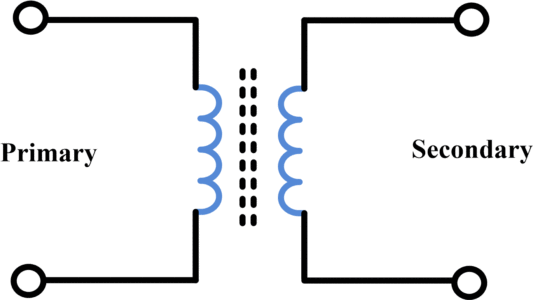Current Transformer
Current transformers (CT) are broadly employed in order to measure high magnitude currents. Such transformers basically step down (lower) the current which is to be measured, so that it can be measured with an average range ammeter. A CT generally possesses one or few primary turns. The primary side winding could be simply a conductor positioned in an empty (hollow) core.
Fig.1: Current Transformer Circuit Diagram
Whereas the secondary side possesses a large number of turns which are precisely wound for a particular turns ratio. Hence the CTs step the voltage up whilst stepping the current down.
Normally, CTs are expressed in terms of primary to secondary current ratio like Ip/Is. A 200:5 CT rating means that the secondary side current is 5 amperes when primary side current is 200 amperes. Generally, the secondary side current rating is 1 ampere or 5 amperes. Current transformers are represented by the following symbol.
Fig.2: Current Transformer Symbol
Potential Transformers
Voltage transformers (VTs) are essentially step-down transformers with highly accurate turns ratio. VTs generally step down the higher voltage to a lower voltage so that it can be measured easily with the standard voltmeter. Such transformers possess a higher number of turns on a primary side and smaller number turns on the secondary side.
Fig.3: Potential Transformer Circuit Diagram
A Voltage transformer is generally represented in terms of primary to secondary voltage ratio like Vp/Vs. For instance, 1000:120 VT means that secondary side voltage is 120 V when the primary side has 1000 V. Voltage transformers are represented by the following symbol.
Fig.4: Potential Transformer Symbol
- You May Also Read: Difference between Core type and Shell type Transformer
This article keys out the main differences between Current and Potential Transformer on the basis of several factors such as function, connection, use, primary and secondary windings, excitation current, core, types, and applications.
Difference between Current Transformer and Potential Transformer
| Characteristics | Current Transformer | Potential Transformer |
|---|---|---|
| Function | Transforms high current into low current | Transforms high voltage into low voltage |
| Connection | Connected in series with the circuit so full line current flows through the winding | Connected in parallel with the circuit so full line voltage appears across the winding |
| Primary current | Primary current does not depend upon secondary side circuit conditions | Primary current relies on secondary side circuit conditions. |
| Secondary side | Secondary side can’t be open circuited when under service | Secondary side can be open circuited without any damage |
| Use | Using current transformer, a 5 Ampere ammeter can be utilized to measure high currents such as 200 amperes | Using potential transformer, a 120 V voltmeter can be used to measure high voltages such as 11 KV. |
| Primary winding | In CT, primary has small number of turns | In PT, primary has large number of turns |
| Secondary winding | Possesses large number of turns in the secondary side | Possesses small number of turns in the secondary side |
| Excitation current & flux density | Vary over a wide range | Vary over a narrow range |
| Core | Made up of silicon steel | Made up of high quality steel which operates at low flux density |
| Input value | Constant Current | Constant Voltage |
| Secondary winding range | 1A-5A | 110V-120V |
| Types | Closed core and wound core | Capacitor voltage type and electromagnetic type |
| Step up/down | They are step-up transformers | They are step-down transformers |
| Applications | Measuring current and operating protective relay in the substation | Measuring voltage and operating protective relay in the substation |



